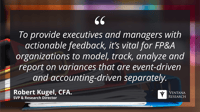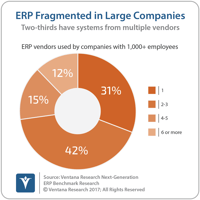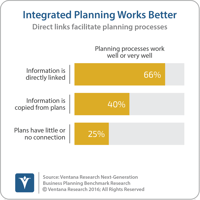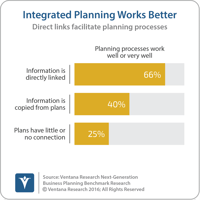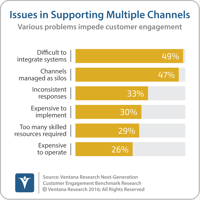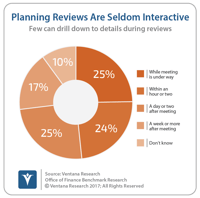We’re in a new era of trade, the result of converging issues that have been building for at least a decade. Structurally and politically, the liberal ethos that drove the trade environment through the second half of the 20th century and into the 21st has changed. There will be a new equilibrium in the future; getting there, though, will be a bumpy ride. Adding to the challenges posed by a shifting trade environment are commodity and currency market volatility and the impacts of ongoing legal,...
Read More
Topics:
Office of Finance,
Recurring Revenue,
Continuous Planning,
Financial Performance Management,
Price and Revenue Management,
Inventory Optimization,
Operations & Supply Chain,
Enterprise Resource Planning,
Sales and Operations Planning,
ERP and Continuous Accounting,
Sales Planning and Analytics,
revenue recognition
New rules governing revenue recognition for contracts have gone into effect for larger companies and are about to go into effect for smaller ones. The Financial Accounting Standards Board (FASB), which administers Generally Accepted Accounting Principles in the U.S. (US-GAAP), has issued ASC 606 and the International Accounting Standards Board (IASB), which administers International Financial Reporting Standards (IFRS) used in most other countries, has issued IFRS 15. The two standards are very...
Read More
Topics:
Office of Finance,
Recurring Revenue,
Continuous Planning,
Sales Performance Management,
Financial Performance Management,
ERP and Continuous Accounting,
Sales Planning and Analytics,
Billing and Recurring Revenue,
revenue recognition
Workiva recently introduced Wdata, a cloud facility for centralizing financial and non-financial information from multiple sources. It frees up time for finance organizations, especially financial planning and analysis (FP&A) groups, to explore conditions and trends in their business because they need to spend less of it gathering data and preparing it for analysis and reporting. Ventana Research recently awarded Workiva our Digital Innovation award for Wdata because of its transformative...
Read More
Topics:
Office of Finance,
Recurring Revenue,
Continuous Planning,
Data Governance,
Data Preparation,
Financial Performance Management,
Price and Revenue Management,
Enterprise Resource Planning,
ERP and Continuous Accounting,
Sales Planning and Analytics,
revenue recognition
A recent analysis of our sales and operations planning (S&OP) dynamic insight research provides perspective on the current state of this core business process. Using concise web-based surveys, Ventana Research’s Dynamic Insights provide research participants with an immediate assessment of their company’s efforts as well as research- and experience-based advice on potential next steps to improve. For those who wish to do a quick assessment of their own company’s sales and operations planning,...
Read More
Topics:
Continuous Planning,
Product Information Management,
Inventory Optimization,
Work and Resource Management,
Operations & Supply Chain,
Enterprise Resource Planning,
Sales and Operations Planning,
Sales Planning and Analytics
OneStream XF from OneStream Software is a financial performance management (FPM) platform available on-premises or in the cloud. The company is a relative newcomer (it started in 2010) but its founders are industry veterans and it has a long list of referenceable customers. Being self-financed, it only recently began to raise its market profile. Its SmartCPM system consists of software for statutory financial consolidation, planning, forecasting, budgeting and reporting that’s used primarily by...
Read More
Topics:
Office of Finance,
Continuous Planning,
Analytics,
HRMS,
Financial Performance Management,
ERP and Continuous Accounting,
Sales Planning and Analytics
Prophix is an established provider of financial performance management (FPM) software for planning and budgeting, forecasting, analysis and reporting, and managing the financial close and consolidation process. Its eponymous software is designed specifically for midsize companies or midsize divisions of larger corporations. These organizations are a distinctive segment of the market in that they have almost all the functional requirements of large enterprises but have fewer resources to apply...
Read More
Topics:
Planning,
Office of Finance,
Reporting,
Budgeting,
Consolidation,
Continuous Planning,
Analytics,
Business Intelligence,
Collaboration,
Financial Performance Management,
Integrated Business Planning,
accounting close,
Price and Revenue Management,
Work and Resource Management,
Sales Planning and Analytics
In 2016 Unit4 acquired Prevero, a financial performance management software company. The acquisition reflects a trend toward the convergence of transactional and analytical business applications. ERP and financial management software vendors increasingly are adding analytic capabilities – especially in financial performance management (FPM) – to the core functions of transaction processing and accounting in order to broaden the scope of their offerings. The integration of transaction processing...
Read More
Topics:
Marketing,
Office of Finance,
Continuous Planning,
Analytics,
Business Intelligence,
Cloud Computing,
Collaboration,
Workforce Management,
Financial Performance Management,
FPM,
Work and Resource Management,
Operations & Supply Chain,
Sales Planning and Analytics
Longview recently completed the acquisition of Tidemark Systems, a planning software vendor. Longview Plan powered by Tidemark is a suite of cloud-based applications that enable corporations to plan, assess performance and communicate results more effectively. The software facilitates what Ventana Research calls “continuous planning.” This is a highly collaborative, action-oriented approach to planning that relies on frequent, short cycles to rapidly create and update integrated company-wide...
Read More
Topics:
Mobile,
Office of Finance,
Recurring Revenue,
Continuous Planning,
Analytics,
Business Intelligence,
Financial Performance Management,
Price and Revenue Management,
ERP and Continuous Accounting,
Sales Planning and Analytics
More than a year ago I wrote from personal experience about the challenges our firm encountered with Salesforce’s cloud computing systems and customer service and if we can trust them for business in the cloud. That perspective covered a range of issues that the behemoth cloud computing applications and platform company is facing regarding its service and technology. While Salesforce has shifted its customers like us and others to a different cloud computing environment, as it did in moving us...
Read More
Topics:
Big Data,
Sales,
Office of Finance,
Analytics,
Cloud Computing,
Collaboration,
Product Information Management,
Sales Performance Management,
Digital Commerce,
Sales and Operations Planning,
Machine Learning and Cognitive Computing,
Sales Enablement and Execution,
Machine Learning Digital Technology,
Sales Planning and Analytics
Ventana Research defines financial performance management (FPM) as the process of addressing the often overlapping people, process, information and technology issues that affect how well finance departments operate and support the activities of the rest of their organization. FPM deals with the full cycle of finance department activities, which include planning and budgeting, analysis, assessment and review, closing and consolidation, internal financial reporting and external financial...
Read More
Topics:
Mobile,
Human Capital Management,
Office of Finance,
Recurring Revenue,
Continuous Planning,
Analytics,
Business Intelligence,
Financial Performance Management,
Price and Revenue Management,
ERP and Continuous Accounting,
Sales Planning and Analytics

